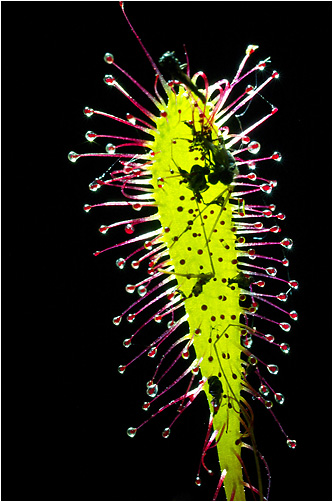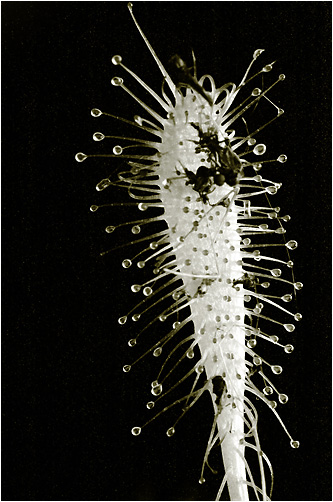| Drosera longifolia L. (leaf) |
| Droseraceae |
 |
| Visible light |
 |
| UV
fluorescence (Y-52, Sylvania Blacklight) |
|
False-Colour
Composite |
| All
images: Nikon D70 @800 ISO, UV-Nikkor 105 mm f/4.5 © Bjørn Rørslett/NN |
| The Great Sundew
plant faces a real challenge, since it is carnivorous and
catches insects with its sticky leaves, but at the same
time, it would like to attract pollinators to the
flowers. One solution apparently is to "signal"
at different wave lengths. Thus, the leaves are yellowish
green with red glandular hair on them, and these hairs
exude a viscous fluid at their tips. This fluid reflects
mainly in the visual range, as does the leaf blade
itself. For any insect with UV-enabled vision, the leaves
would appear bright red with shining drops along the
perimeter. On the other hand, the flower is mainly
absorbing UV, but the nectaria strongly fluoresce in UV,
so the flowers to the
insects might appear bright yellow with shining blueish
nectaria inside. Sundew, a plant confined to bogs and wet habitats, only opens its flowers in bright sunlight, and concurrently, the sticky hairs develop their luring bright drops of viscous fluid. Evidently the clever scheme works well to the plant's satisfaction albeit not to the benefit of the insects being trapped and digested. |
| To Top | Far Side | Gallery | *UV | IR | Lenses | Links | Personal | Professional | Reviews | Start | |
Last Update 17 July, 2005